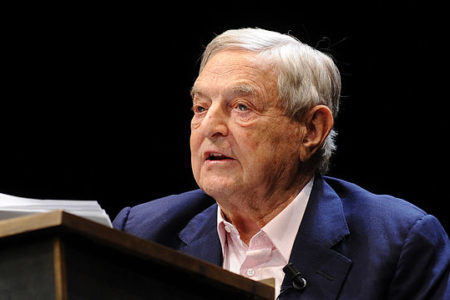
Is the postmodern theory of intersectionality–the new master narrative of the left, which claims to expose the hidden and overlapping structures of oppression in Western societies–intrinsically hostile to Jews and Israel? Or is it a mere accident that the loudest proponents of intersectionality also tend to be obsessed with “Jewish privilege” and the alleged depredations of the Jewish state? Is it possible to imagine a form of intersectionality that is
friendly to Zionism and Israel? Or does anti-Semitism and hatred of Israel go to the core of intersectionality?
As intersectionality has migrated from postmodern academe to the forefront of left-wing activism, these questions have become urgent for anyone worried about anti-Semitism and anti-Zionism. Witness, for example, the controversy over the connections between the Women’s March and Nation of Islam chief Louis Farrakhan. Despite significant mainstream-media pressure, and the pleas of their liberal-Jewish allies, the leaders of the Women’s March have refused to distance themselves from Farrakhan or forcefully condemn his long record of anti-Semitic rhetoric.
The Women’s March has defended Farrakhan in intersectional terms. “People need to understand the significant contributions that these individuals have made to Black and Brown people,” said organizer Carmen Perez. Their liberal critics, meanwhile, have contended that the group’s flirtations with Farrakhan are a betrayal of “true” intersectionality. So which is it? Does intersectionality compel the Women’s March to embrace or apologize for Farrakhan? Or would a properly intersectional analysis require the Women’s March to disown him?
I’m afraid that, in this case, the Women’s March leaders know of what they speak, and that their critics on the anti-Farrakhan left are fooling themselves. That is, the Women’s March is going to bat for a vile anti-Semitic preacher, who has praised Hitler as a “very great man,” not in spite of intersectionality but precisely because of it.
To understand why, it helps to explore the intellectual history. The theory of intersectionality draws from two rivers of thought that flow in opposite directions.
The first is a set of ideas that came to replace class struggle and dialectical materialism on the left beginning in the 1960s and into ’90s. As the horrors of socialism came to light, the Soviet experiment faltered, and Marxism was discredited, the left became skeptical of all claims to objectively knowable truth. Science and religion, the Enlightenment and Judeo-Christianity, reason and revelation; these, the left’s big thinkers said, were all failed “grand narratives” that served the needs of power. Thus, every claim about truth, justice, beauty, and the good was actually an imposition of white, male privilege. Everyone is partial, according to this view, and nothing transcends race-gender-sex power dynamics.
Intersectionality’s second source of inspiration is the age-old dream of manmade utopia. The demise of Marxism, with its promise of a classless society as the preordained endpoint of history, didn’t put an end to all “secularized theologies,” as the classical liberal philosopher Raymond Aron described Marxism and dialectical materialism. Idealistic people of the left, and especially the young, still believe that radical political action can bring about the Kingdom of Heaven here and now, that social-justice activism will one day wipe every tear (cf. Rev. 21:4).
Bring those two things together–the denial of objective truth and justice, on the one hand, and the dream of perfect justice, on the other–and you get intersectionality. Elizabeth Corey and Jonathan Haidt, then, are correct to describe intersectionality as a latter-day Gnostic religion. But they only paint a partial picture. Intersectionality is a religion, yes, but one that denies the possibility of all ultimate truths and therefore lacks–indeed, rejects–a standard measure of justice. That is why intersectional “justice” generally takes the form of online mobs. It is also why intersectional “justice” is so arbitrary and so hostile to Israel and the Jews.
Precisely because it is a theory of generalized victimhood, intersectionality targets the Jews–the 20th century’s ultimate victims. Acknowledging the Jews’ profound claims to victimhood would force the intersectional left to admit the existential necessity of the State of Israel. But the intersectional left is not prepared to do so because, under intersectionality’s rules, all the outcomes are predetermined. Israel has been prejudged an outpost of Western colonialism. Therefore, the Jews cannot possibly be allowed to “win” the intersectional victimhood Olympics.
Intersectionality, moreover, allows its proponents to apply hideous double standards when judging between Israel and its enemies. Judged against a fair and universal standard, the Jewish state comes out looking very good indeed, especially when one takes into consideration the fact that it has been at war since its founding. But the intersectional left dreams of perfect justice without a standard of justice. It can, therefore, condemn the sole democracy in the Middle East while ignoring or whitewashing the far worse crimes of her enemies. And even the most progressive aspects of Israeli society count against it in the victimhood Olympics.
Finally, Jewish victimhood, whether at the hands of the Nazis or the Soviets, requires the intersectional left to admit that, by contrast, and for all their faults, the Western democracies (including Israel) are pretty decent, even admirable. But again, the intersectional left is committed to the opposite idea–that everywhere in the West, there are hidden “structures of oppression” that trap minorities along the lines of race, gender and sexuality. Thus, again, the Jews will lose the intersectional victimhood Olympics.
Whenever such relativism reigns–and the very possibility of objective truth is denied–Jews are imperiled. Israelis and their friends, including fair-minded liberals, would be wise to abjure intersectionality altogether, rather than try to make their case on intersectional terms.
This column was adapted from an address at the 6th Global Forum for Combatting Anti-Semitism, in Jerusalem.






Recent Comments